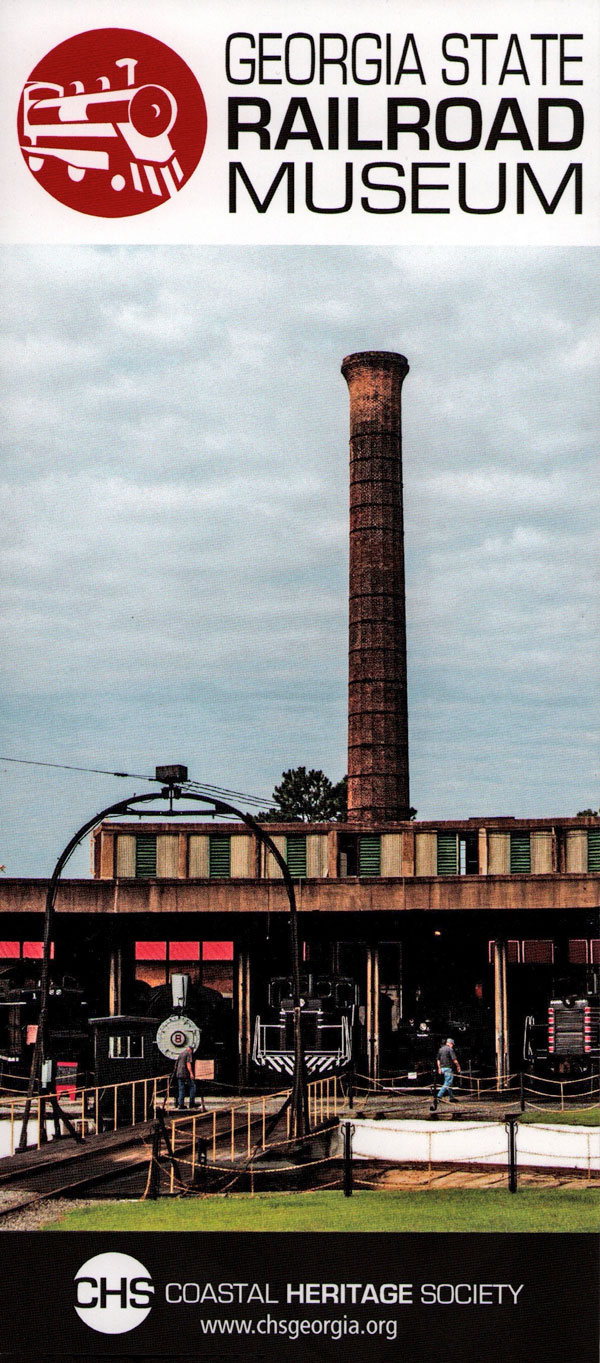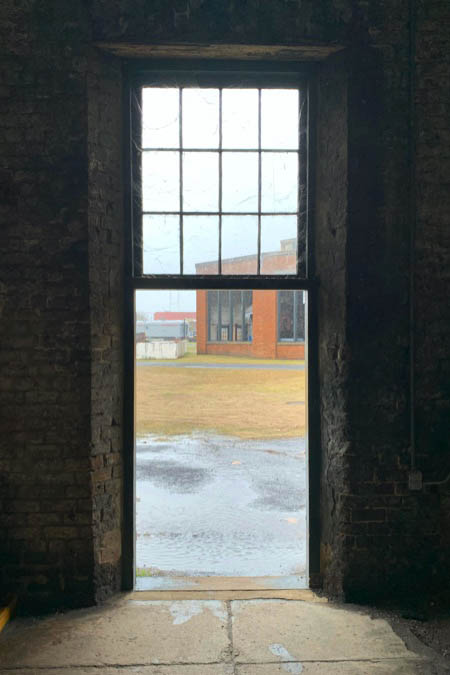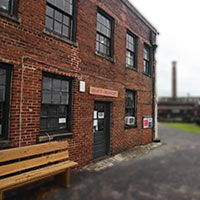 |
Georgia State Railroad Museum Buildings and Grounds |

Savannah, Ga / Oct 2024 / RWH

Dec 2019 / RWH
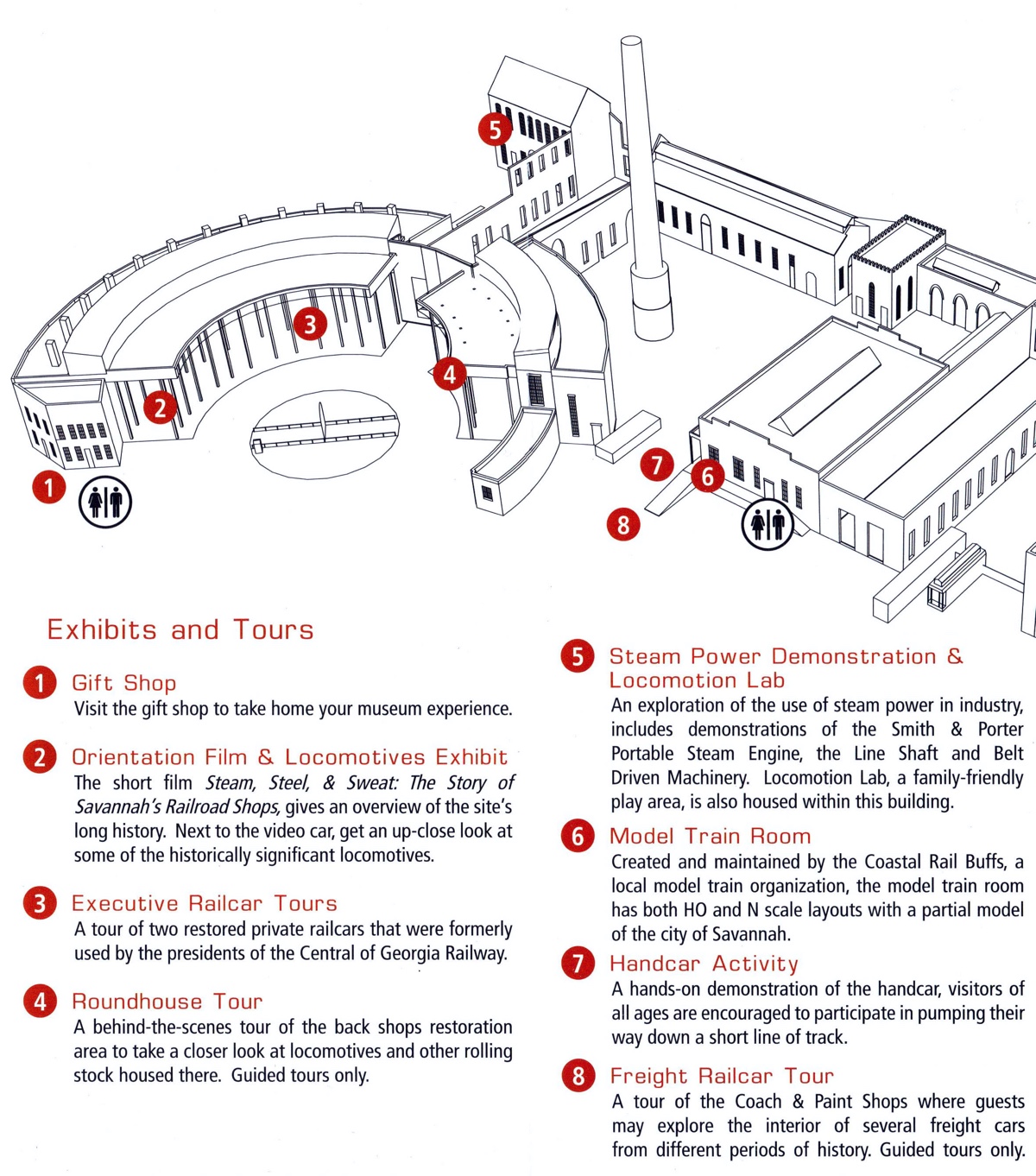
2019 brochure / collection
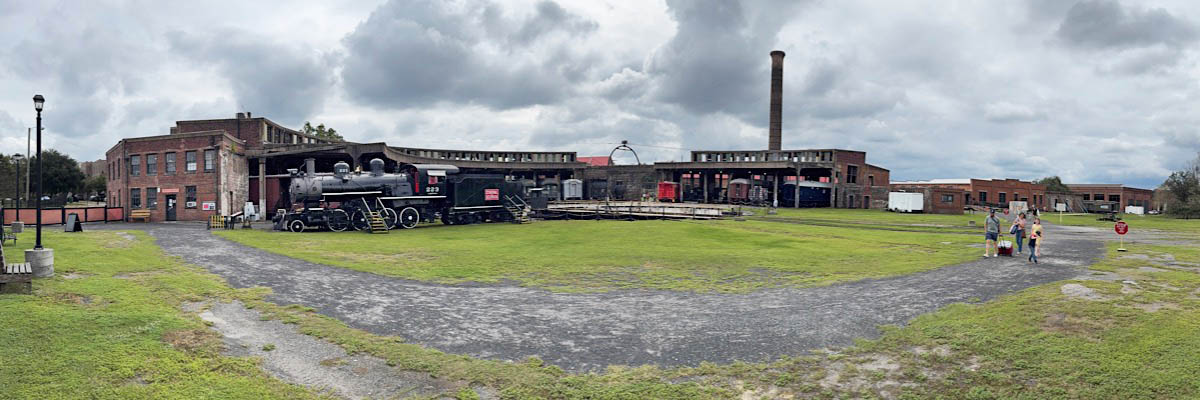
Savannah, Ga / Oct 2024 / RWH
Roundhouse

Savannah, Ga / Dec 2019 / RWH
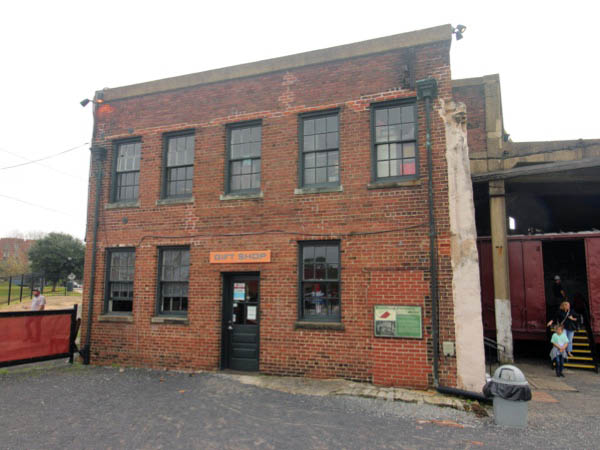
Savannah, Ga / Dec 2019 / RWH

Savannah, Ga / Dec 2019 / RWH
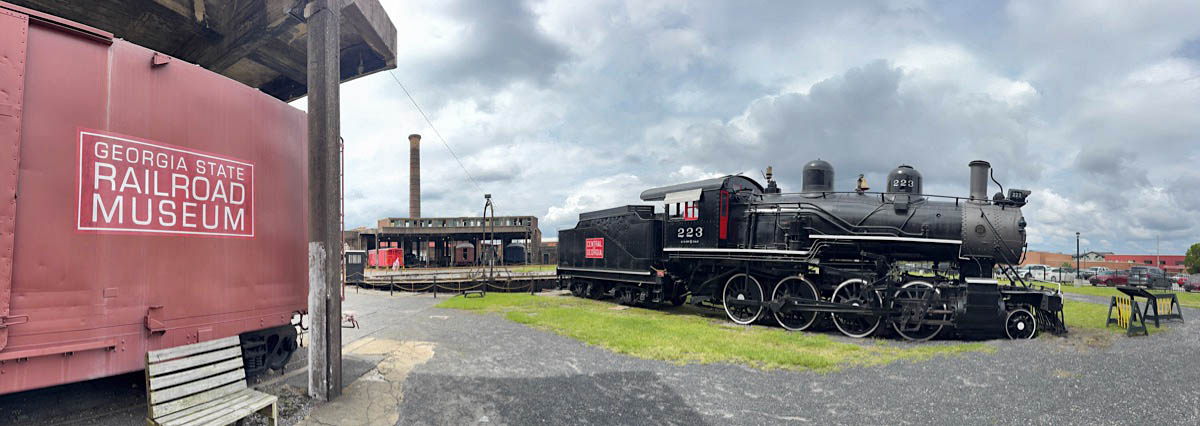
Savannah, Ga / Oct 2024 / RWH

Savannah, Ga / Dec 2019 / RWH
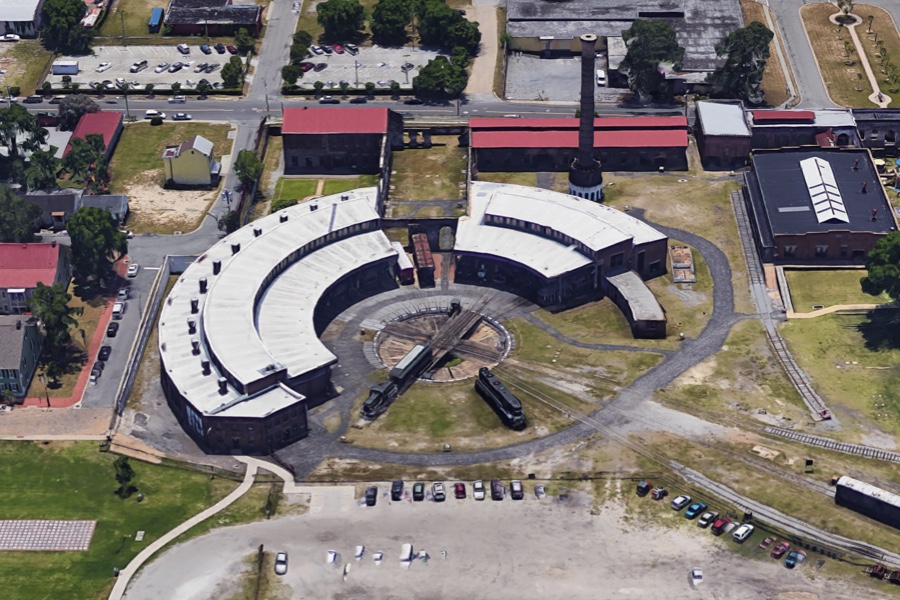
Roundhouse overhead / Google Maps
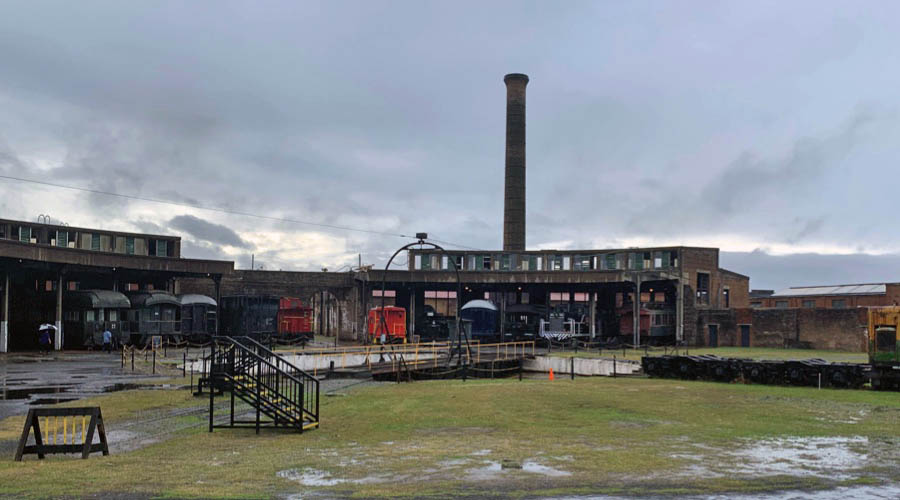
Savannah, Ga / Dec 2019 / RWH

 t the heart of the site is the Roundhouse, a large structure where locomotives were inspected, maintained and housed between operating cycles. Completed in 1855, the original Roundhouse was circular and only 250 feet in diameter. In 1926, half of the 1855 building was demolished, redesigned and expanded in order to accommodate larger steam locomotives. The Roundhouse was divided into 34 bays, each over 138 feet long. The large hoods that protrude through the ceiling, called "smoke jacks," were used to vent the smoke and steam from the parked locomotives. The floor of the Roundhouse is composed of wooden blocks. Wood blocks were used because they absorbed grease, oil and water, were easy to maintain and protected tools and cast iron parts from damage when dropped. During the remodeling, seven stalls were converted into a separate "back shop" area. Each of the stalls has a maintenance pit which is 3-4 feet deep, allowing workers access to the underside of locomotives. This section also included an electric drop table, allowing railroad mechanics to completely remove the wheels from the locomotives so they could be repaired or replaced.
t the heart of the site is the Roundhouse, a large structure where locomotives were inspected, maintained and housed between operating cycles. Completed in 1855, the original Roundhouse was circular and only 250 feet in diameter. In 1926, half of the 1855 building was demolished, redesigned and expanded in order to accommodate larger steam locomotives. The Roundhouse was divided into 34 bays, each over 138 feet long. The large hoods that protrude through the ceiling, called "smoke jacks," were used to vent the smoke and steam from the parked locomotives. The floor of the Roundhouse is composed of wooden blocks. Wood blocks were used because they absorbed grease, oil and water, were easy to maintain and protected tools and cast iron parts from damage when dropped. During the remodeling, seven stalls were converted into a separate "back shop" area. Each of the stalls has a maintenance pit which is 3-4 feet deep, allowing workers access to the underside of locomotives. This section also included an electric drop table, allowing railroad mechanics to completely remove the wheels from the locomotives so they could be repaired or replaced.
Georgia State Railroad Museum
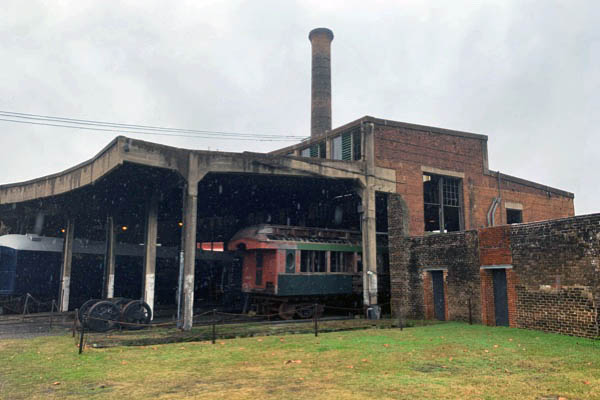
Savannah, Ga / Dec 2019 / RWH
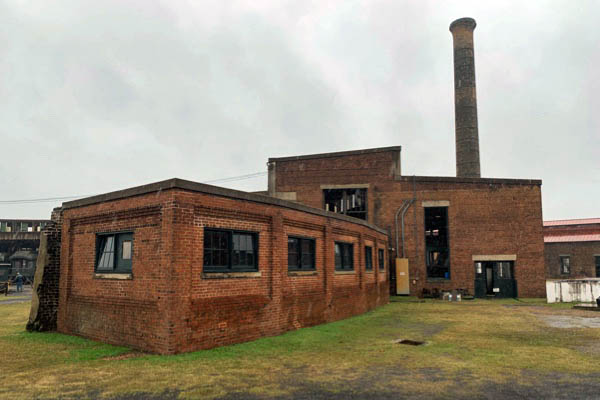
Savannah, Ga / Dec 2019 / RWH

Savannah, Ga / Dec 2019 / RWH
HawkinsRails thanks James McInvale of The Inky Atlas for use of his wonderful GSRM sketches


James McInvale / The Inky Atlas

Savannah, Ga / Oct 2024 / RWH
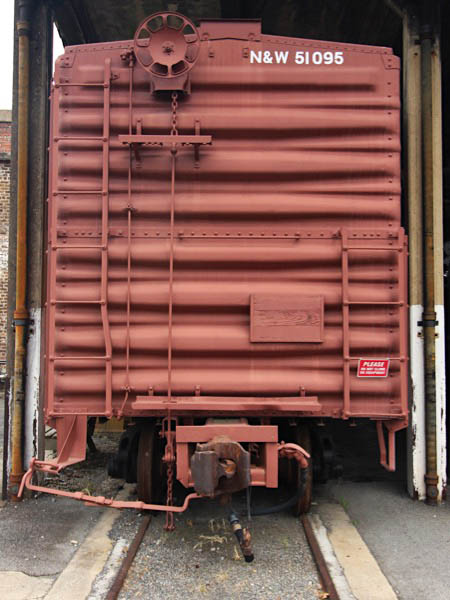
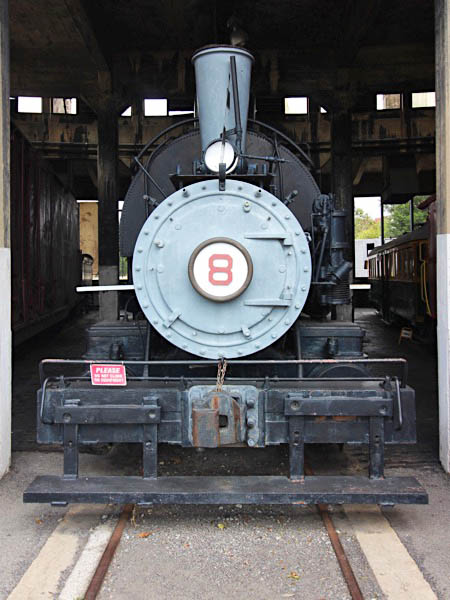
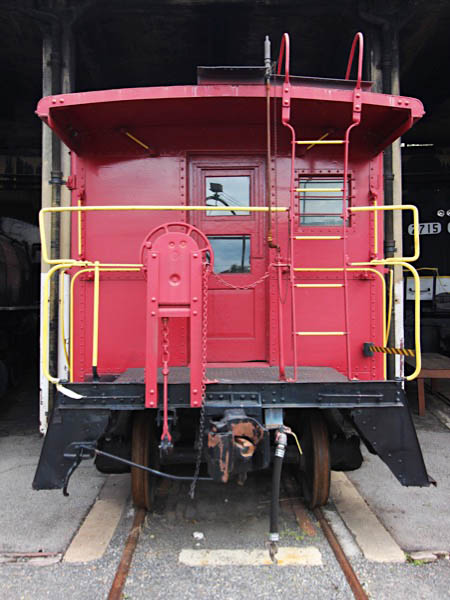
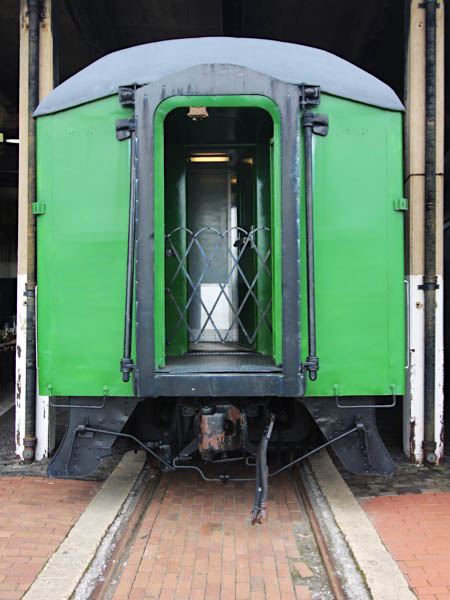
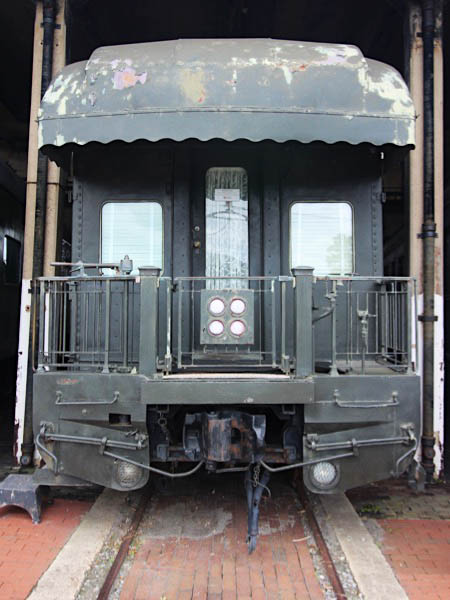
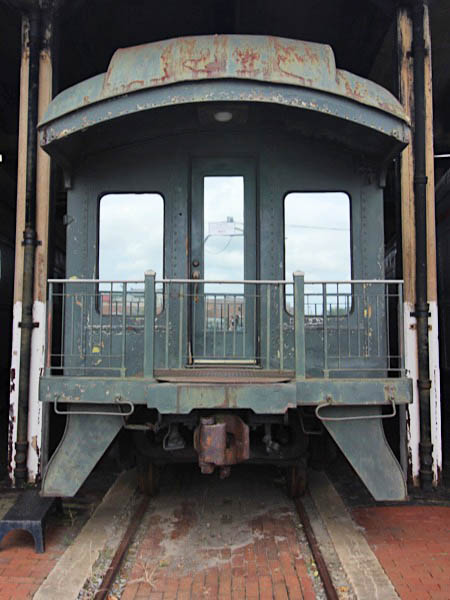
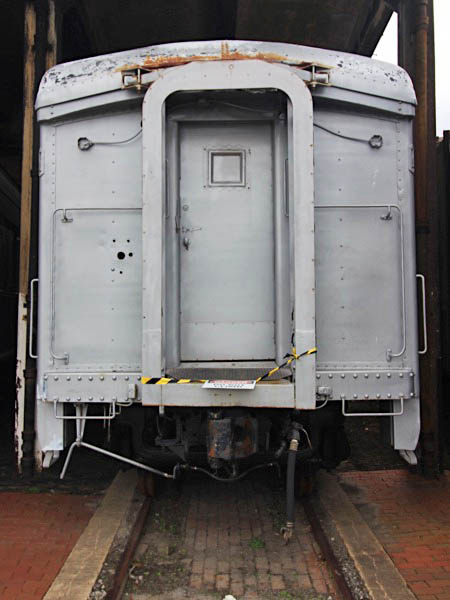
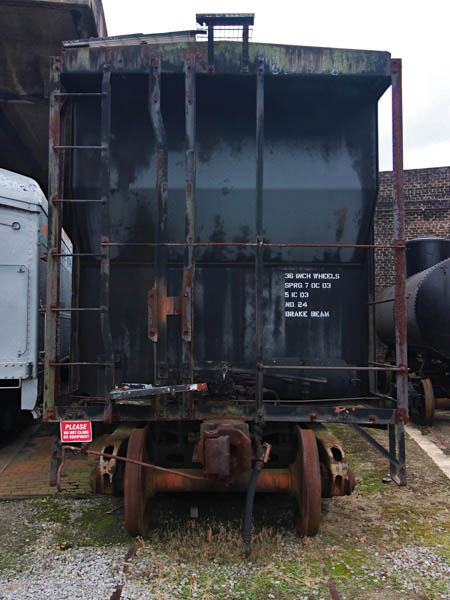
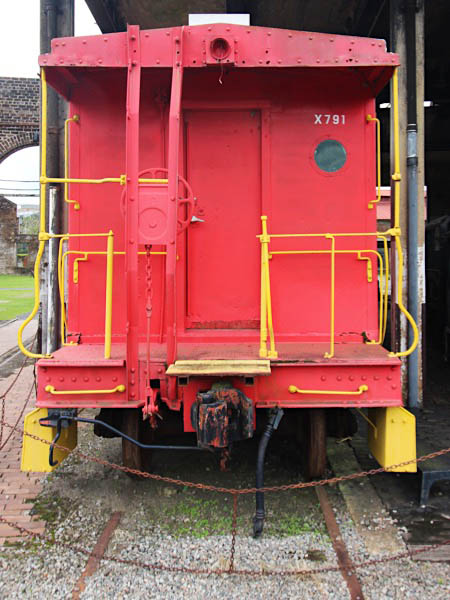
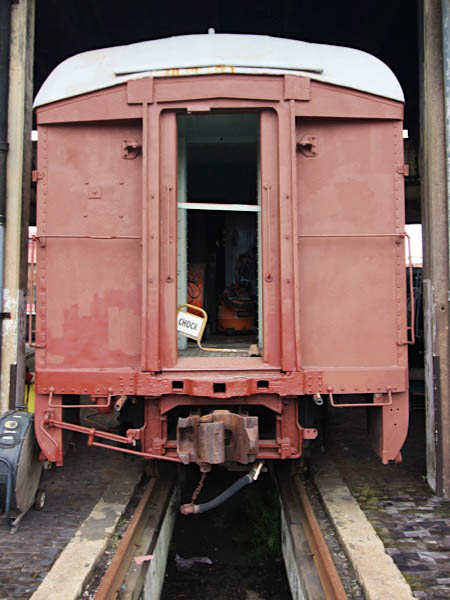
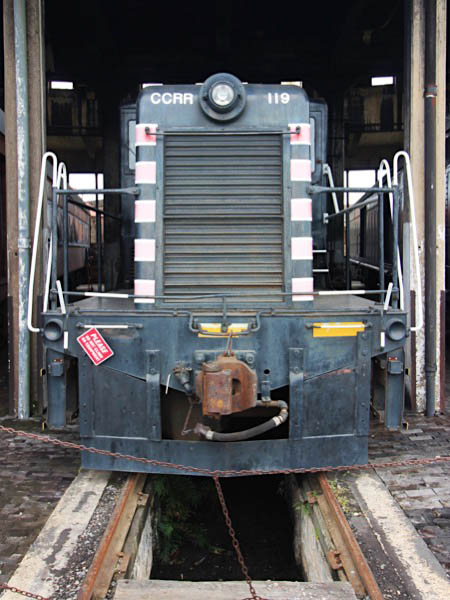
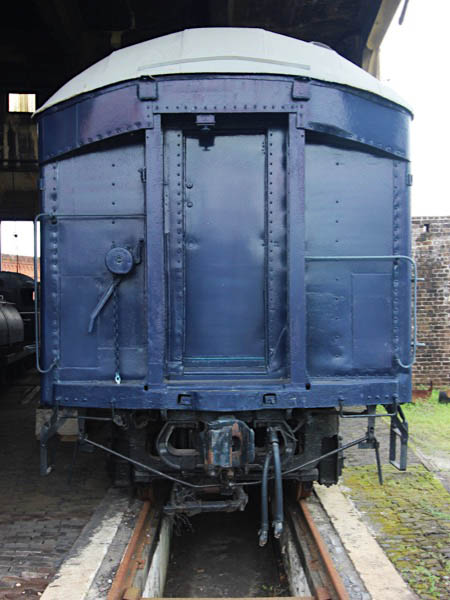
Oct 2024 / RWH
 Article
Article
Site History
 The Central of Georgia Rail Road and Canal Company was chartered by the State of Georgia in December 1833 to build a railroad or canal to Macon, 190 miles inland from Savannah. The primary purpose was to transport cotton to Savannah for export. In 1836, the charter was amended so the company could change its name to Central Railroad & Banking Company. The first President of the Central was William Washington Gordon, who had previously served as the Mayor of Savannah and was the grandfather of Juliette Gordon Low, the founder of the Girl Scouts. Construction of the Savannah Repair Shops began in 1851 and was completed by 1855.
The Central of Georgia Rail Road and Canal Company was chartered by the State of Georgia in December 1833 to build a railroad or canal to Macon, 190 miles inland from Savannah. The primary purpose was to transport cotton to Savannah for export. In 1836, the charter was amended so the company could change its name to Central Railroad & Banking Company. The first President of the Central was William Washington Gordon, who had previously served as the Mayor of Savannah and was the grandfather of Juliette Gordon Low, the founder of the Girl Scouts. Construction of the Savannah Repair Shops began in 1851 and was completed by 1855.
By the beginning of the Civil War, the Central had the second largest holding of rolling stock in the South, but lost much of its greatness during the war. William Wadley became President of the Central in January 1866 and oversaw the railroad's recovery. In 1872, the Central purchased the 273 acre Vale Royal Plantation, fronting the Savannah River, and built docks and warehouse facilities which they used until they sold the property to the State of Georgia in 1958. It is now part of the Georgia Ports Authority. Also in 1872, the Central purchased the Savannah Steamship Line, forming the Ocean Steamship Company of Savannah. In 1893, the Central operated an innovative high speed passenger service between Savannah and Atlanta known as the "Nancy Hanks."
The Central reached its peak from 1920 to 1950 and was the largest employer in Savannah. In the late 1940s, the Savannah Repair Shops began servicing the newer diesel locomotives, but the facility was not conducive to diesel maintenance. Soon the majority of the diesel locomotives were sent to the newer Macon shops. In 1963, the Southern Railway purchased the Central and the Savannah Repair Shops were closed.
After years of neglect, Southern Railway began demolishing several structures on the site of the Savannah Repair Shops. A group of concerned citizens halted the destruction and Southern Railway transferred the property to the City of Savannah. In 1978, the Central's Savannah Railroad facilities were recognized as a National Historic Landmark District. The Repair Shops remained abandoned and decaying until 1989 when the nonprofit Coastal Heritage Society accepted management of the site.
With support from the City of Savannah, many of these structures have been restored. The buildings serve as interpretive and exhibit spaces for Georgia State Railroad Museum and Savannah Children's Museum. The former Central Repair Shops are now the largest and most complete antebellum railroad facility of its kind in the world.
Georgia State Railroad Museum
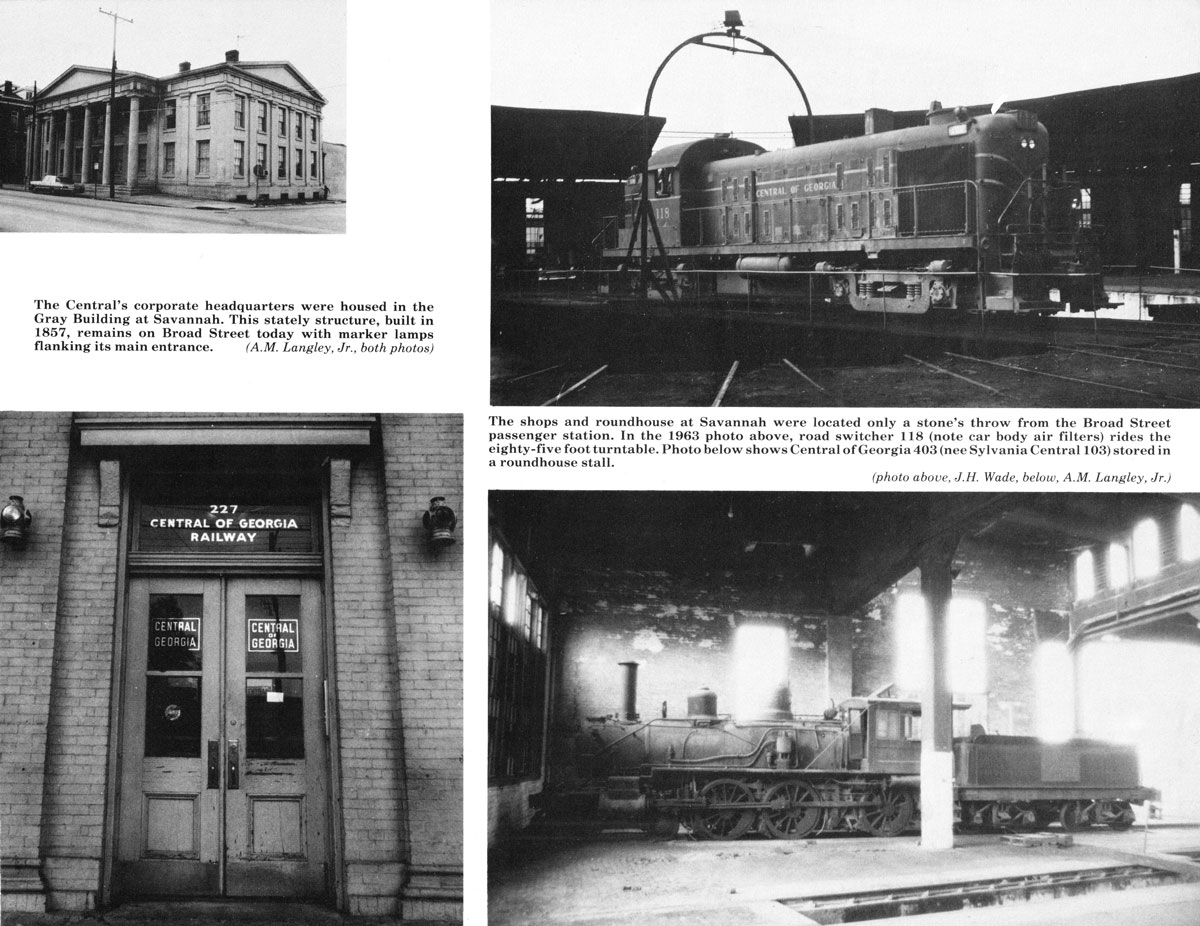
from Central of Georgia Railway Scrapbook
- Beckum Jr. and Langley Jr. / collection
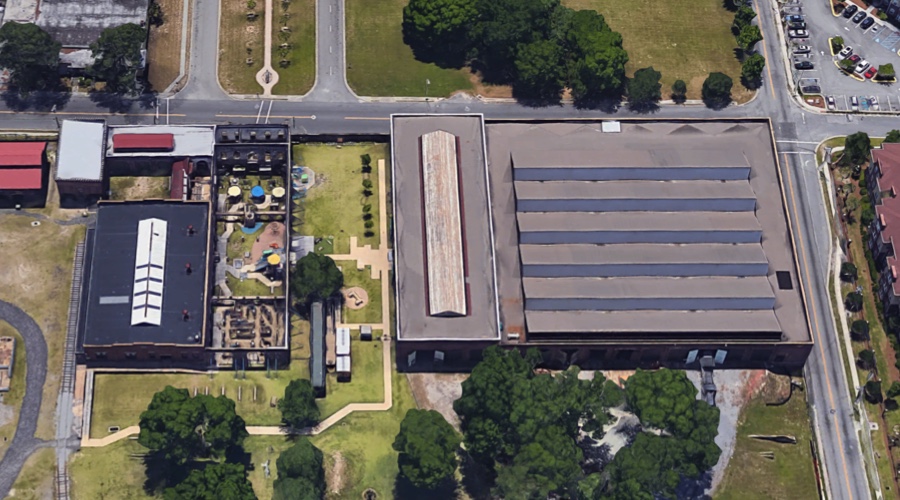
Storehouse, Carpenters' Shop, Coach Shop, Paint Shop overhead / Google Maps
Storehouse
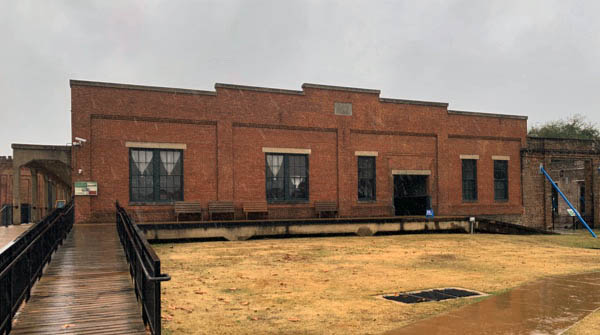
Savannah, Ga / Dec 2019 / RWH
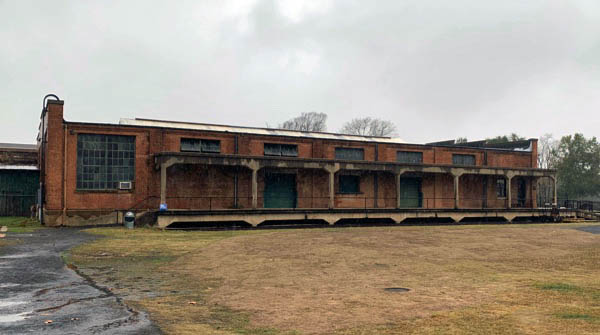
Savannah, Ga / Dec 2019 / RWH

 ompleted in 1925, this "new" Storehouse replaced a smaller one that no longer exists. It was used to store mechanical parts for repairing and building locomotives and rolling stock, as well as many other supplies necessary in the operation of the railroad — even hairbrushes for passenger cars! It also housed the Print Shop, which produced office forms and information, as well as the Central's company magazine, "The Right Way."
ompleted in 1925, this "new" Storehouse replaced a smaller one that no longer exists. It was used to store mechanical parts for repairing and building locomotives and rolling stock, as well as many other supplies necessary in the operation of the railroad — even hairbrushes for passenger cars! It also housed the Print Shop, which produced office forms and information, as well as the Central's company magazine, "The Right Way."
Georgia State Railroad Museum
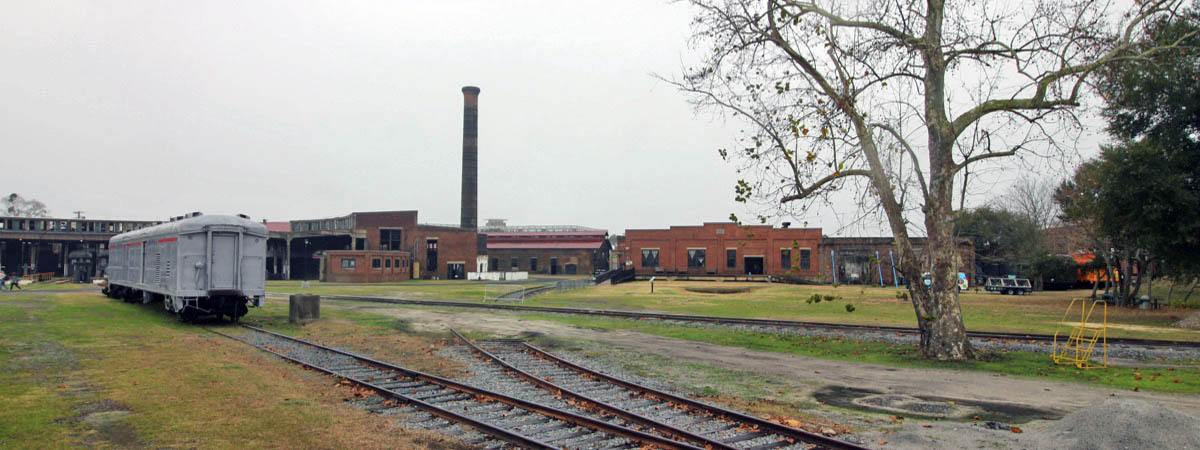
Savannah, Ga / Dec 2019 / RWH
 Mapping the Central
Mapping the Central
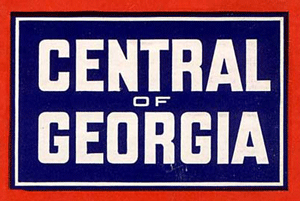 The Storehouse building includes a wonderful wall-sized diagram map of the entire Central of Georgia Railway system at its peak size, before absorption by the Southern Railway. Cities key to the Central's prominence in the region are shown below in detail.
The Storehouse building includes a wonderful wall-sized diagram map of the entire Central of Georgia Railway system at its peak size, before absorption by the Southern Railway. Cities key to the Central's prominence in the region are shown below in detail.

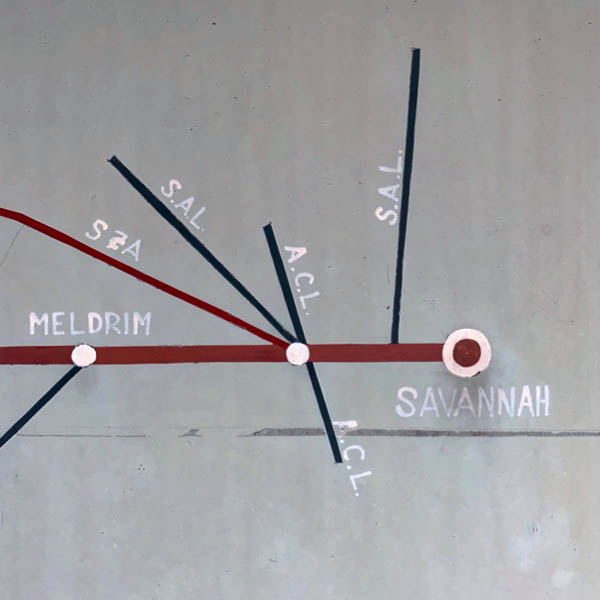
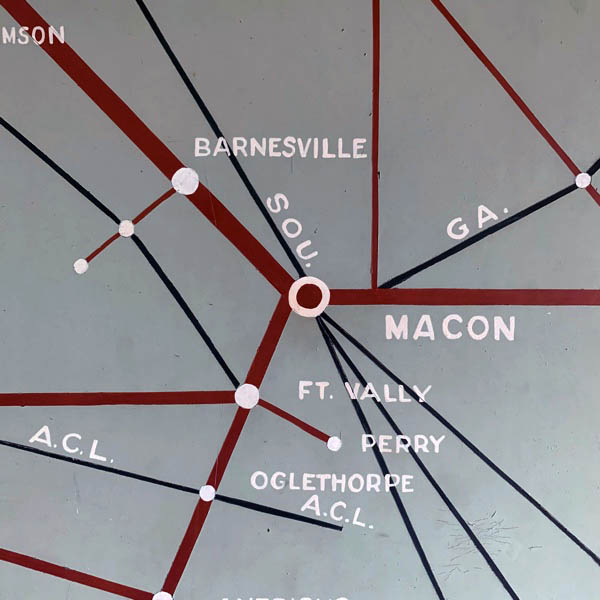
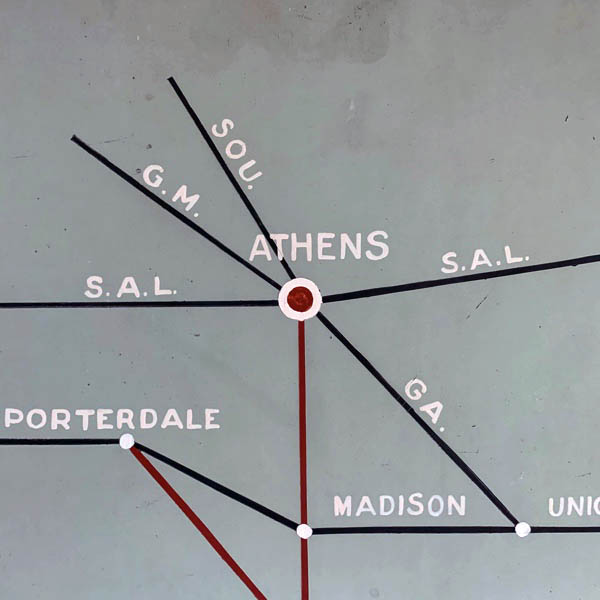
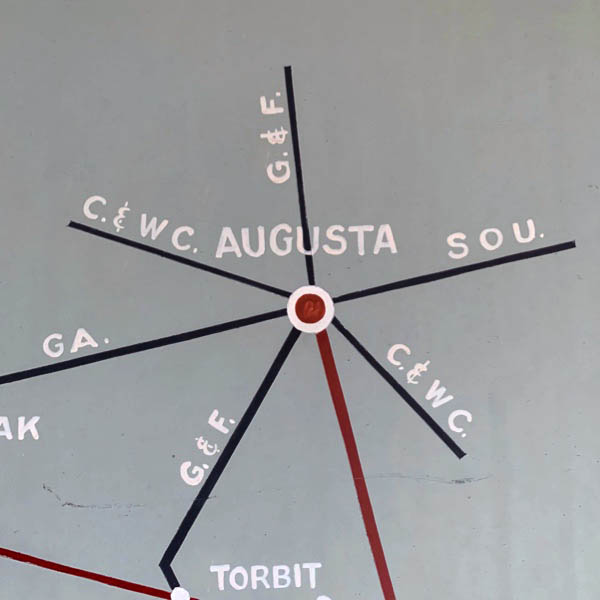
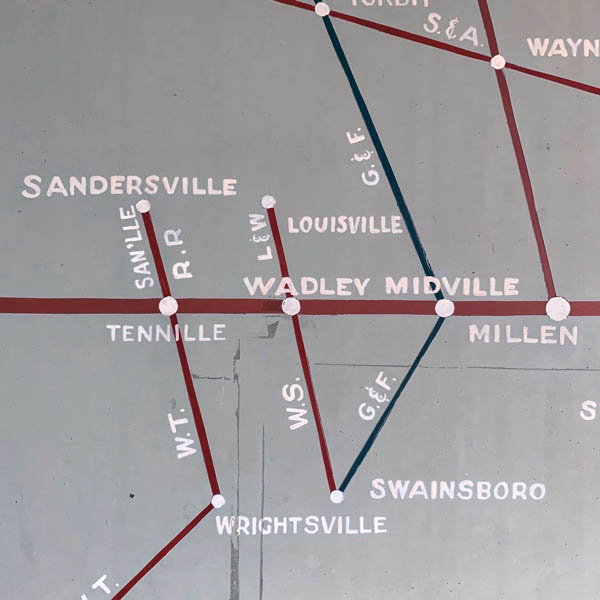

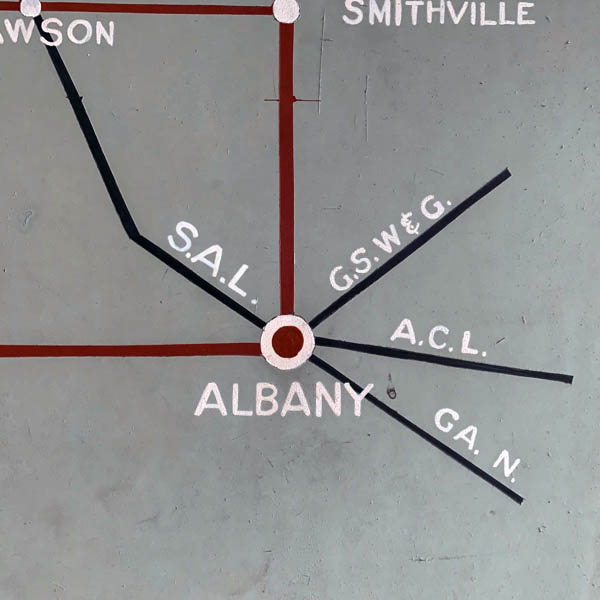
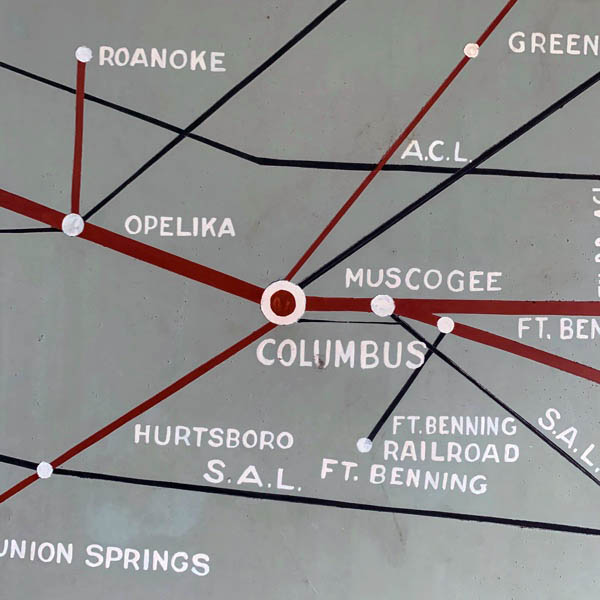

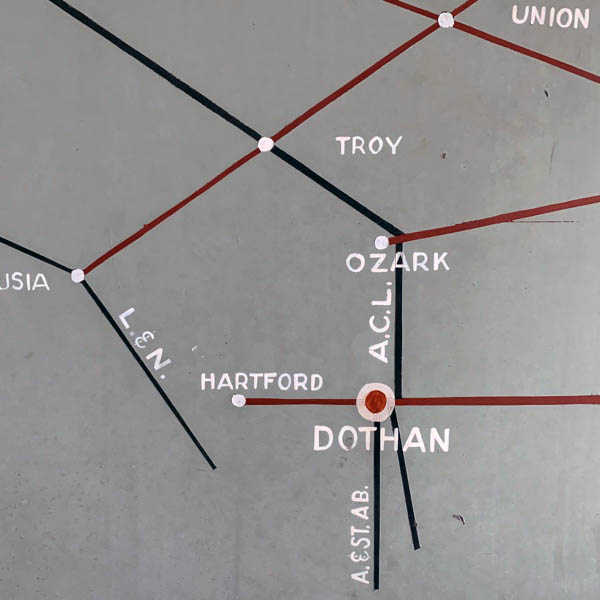

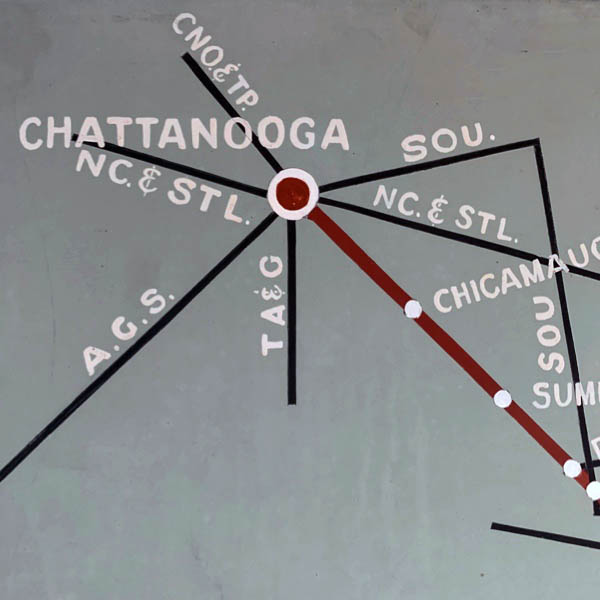
all photos above: Savannah, Ga / Dec 2019 / RWH
Carpenters' Shop
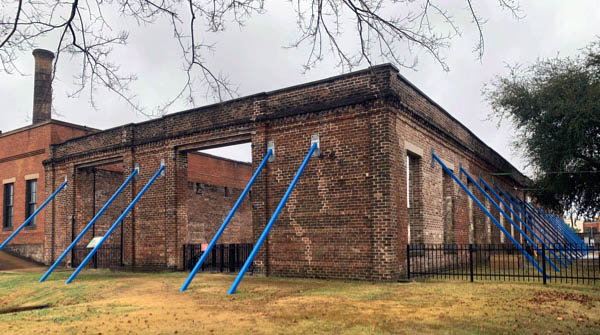
Savannah, Ga / Dec 2019 / RWH

Dec 2019 / RWH

 he Carpenters' Shop, constructed by 1853, housed all the woodworking tools, many of which were powered by overhead shafting. Here rough and finish carpentry work provided all the woodworking necessary for the passenger and freight cars, as well as furniture and architectural elements such as doors and windows. The building was mostly destroyed by a fire started in the Coach Shop in 1923. Currently, the building houses Exploration Station, the outdoor phase of Savannah Children's Museum.
he Carpenters' Shop, constructed by 1853, housed all the woodworking tools, many of which were powered by overhead shafting. Here rough and finish carpentry work provided all the woodworking necessary for the passenger and freight cars, as well as furniture and architectural elements such as doors and windows. The building was mostly destroyed by a fire started in the Coach Shop in 1923. Currently, the building houses Exploration Station, the outdoor phase of Savannah Children's Museum.
Georgia State Railroad Museum
Coach Shop

Savannah, Ga / Dec 2019 / RWH
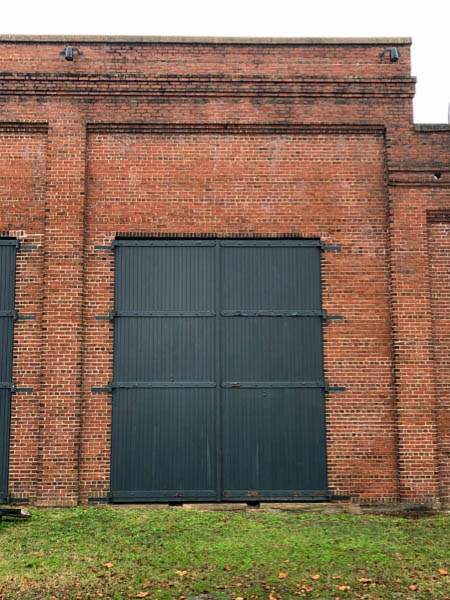
RWH

 he Coach Shop building was constructed in 1924 to replace the Car Shop that was destroyed by fire in 1923. Here both passenger and freight cars were built, repaired or refurbished. Currently, the building is being restored and will be the future site of the indoor phase of Savannah Children's Museum.
he Coach Shop building was constructed in 1924 to replace the Car Shop that was destroyed by fire in 1923. Here both passenger and freight cars were built, repaired or refurbished. Currently, the building is being restored and will be the future site of the indoor phase of Savannah Children's Museum.
Georgia State Railroad Museum
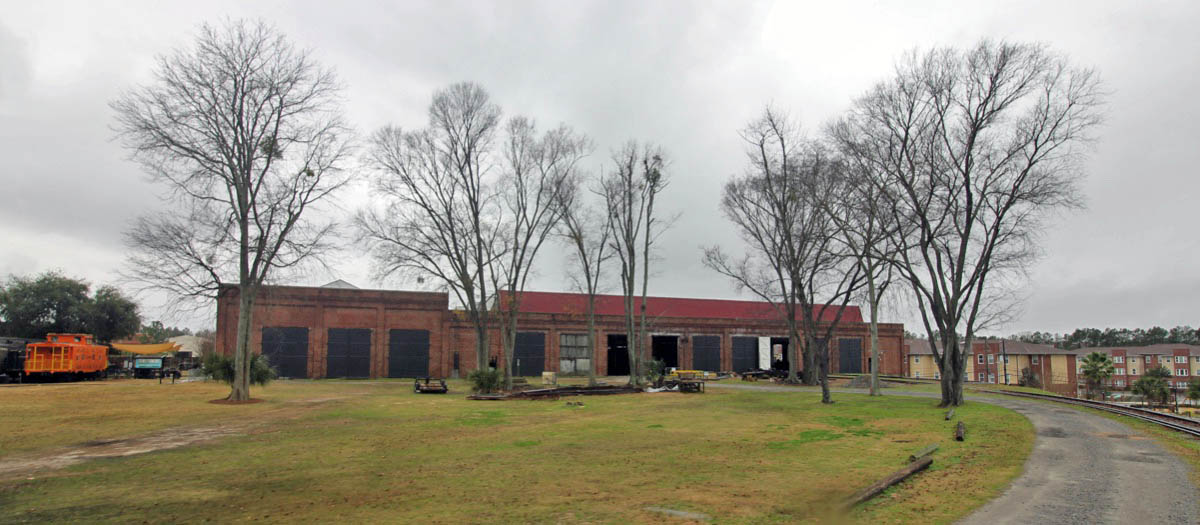
Savannah, Ga / Dec 2019 / RWH
Paint Shop
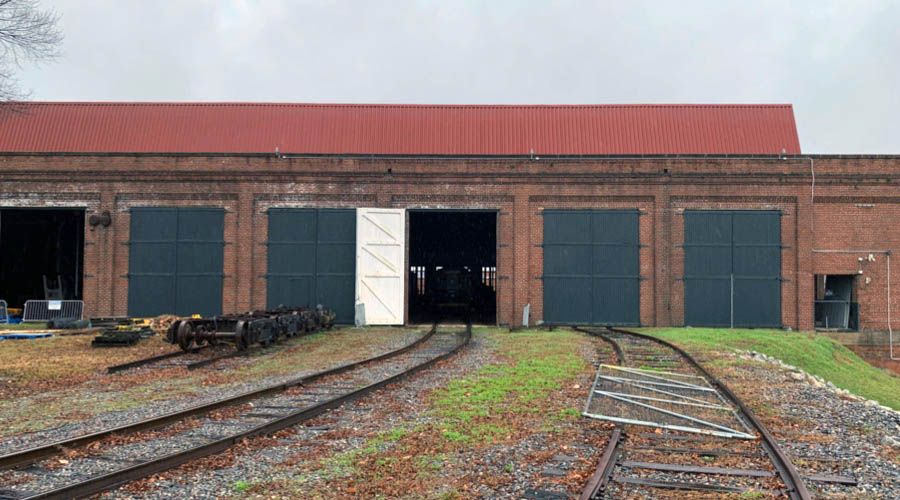
Savannah, Ga / Dec 2019 / RWH

 he Paint Shop building was constructed in 1925 on the footprint of the Coach Shop, destroyed by fire in 1923. The upper level of the building was used for stripping and painting of both passenger and freight cars. The basement level included offices, electrical department and a testing lab. Currently, the building is being restored and is used to display a number of pieces of rolling stock and historic machine.
he Paint Shop building was constructed in 1925 on the footprint of the Coach Shop, destroyed by fire in 1923. The upper level of the building was used for stripping and painting of both passenger and freight cars. The basement level included offices, electrical department and a testing lab. Currently, the building is being restored and is used to display a number of pieces of rolling stock and historic machine.
Georgia State Railroad Museum
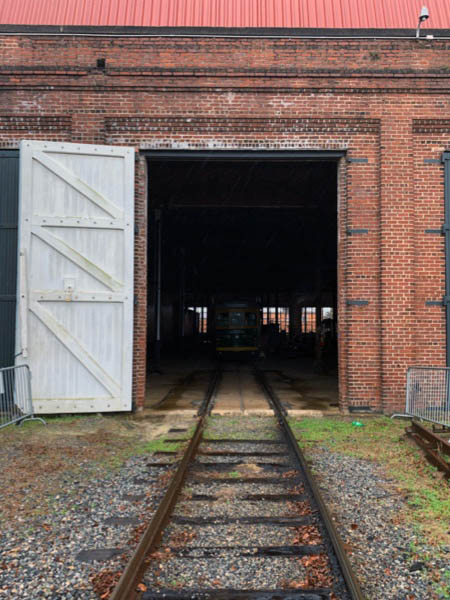
Dec 2019 / RWH
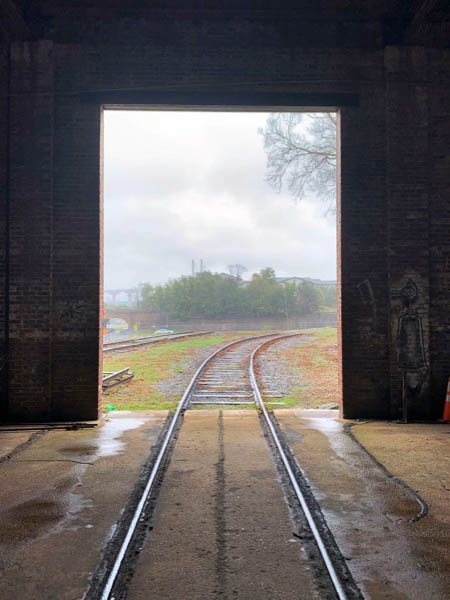
Dec 2019 / RWH
Smokestack
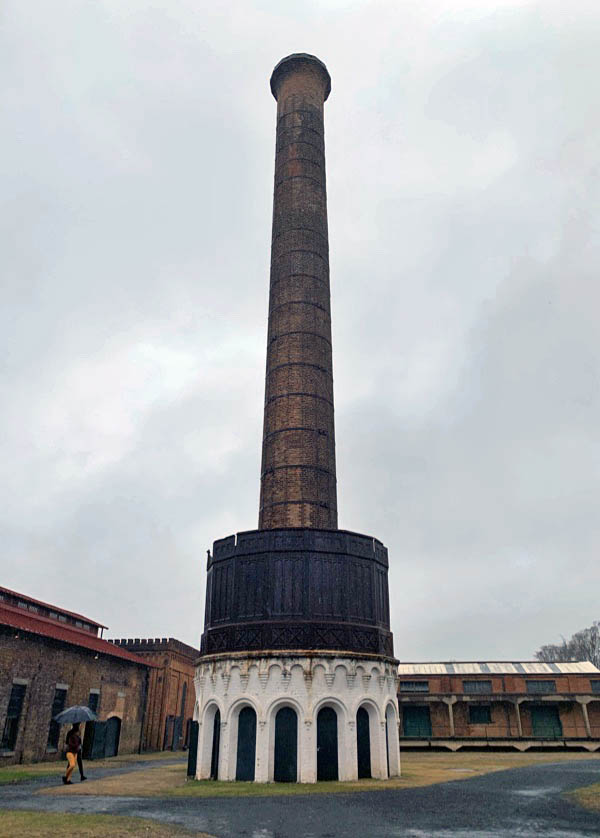
Savannah, Ga / Dec 2019 / RWH

Dec 2019 / RWH
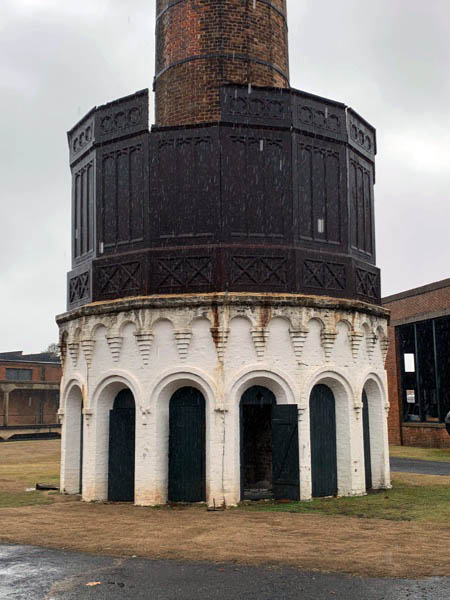
Dec 2019 / RWH
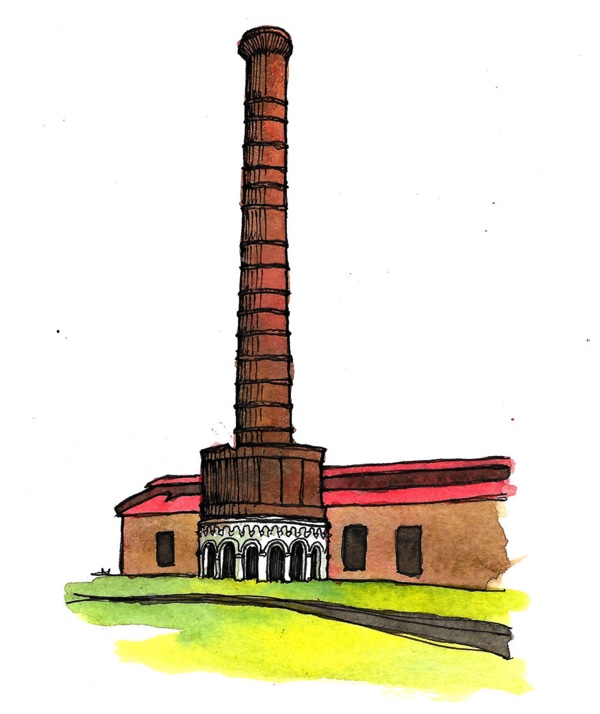
James McInvale / The Inky Atlas

 ompleted by 1855, this 125-foot-tall Smokestack was used to draw smoke from the Blacksmith Shop and Boiler Room via underground tunnels. The lower portion of the stack held a 40,000 gallon cast iron rainwater collection tank and the small rooms under the tank served as privies and showers.
ompleted by 1855, this 125-foot-tall Smokestack was used to draw smoke from the Blacksmith Shop and Boiler Room via underground tunnels. The lower portion of the stack held a 40,000 gallon cast iron rainwater collection tank and the small rooms under the tank served as privies and showers.
Georgia State Railroad Museum
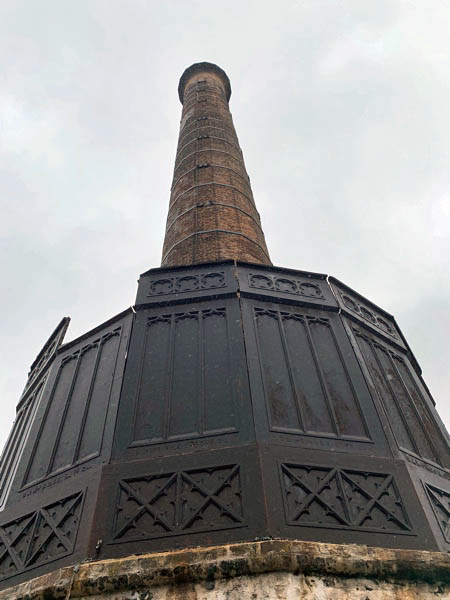
Dec 2019 / RWH
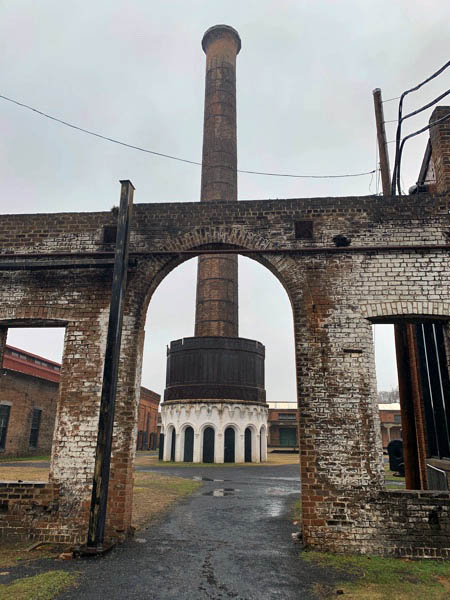
Dec 2019 / RWH
 Blacksmith Shop
Blacksmith Shop
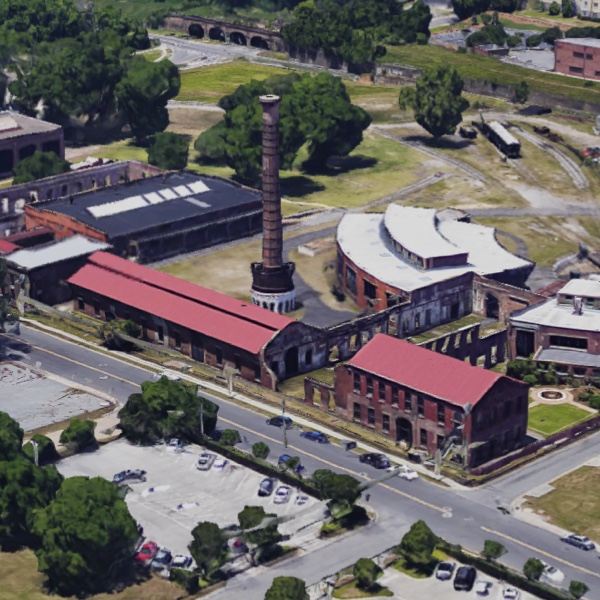
Blacksmith and Tender Frame Shops overhead / Google Maps
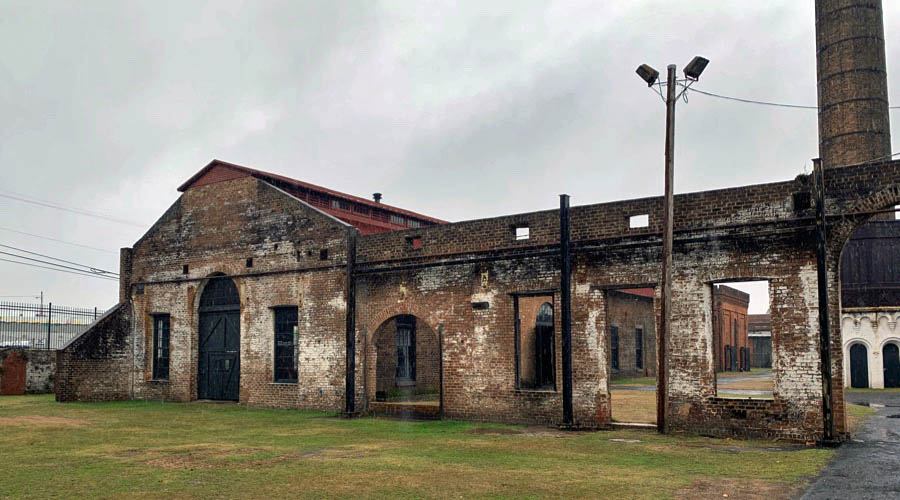
Blacksmith Shop
Savannah, Ga / Dec 2019 / RWH
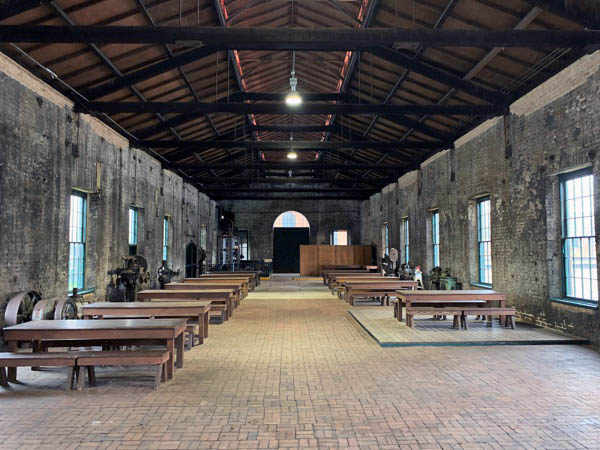
Dec 2019 / RWH
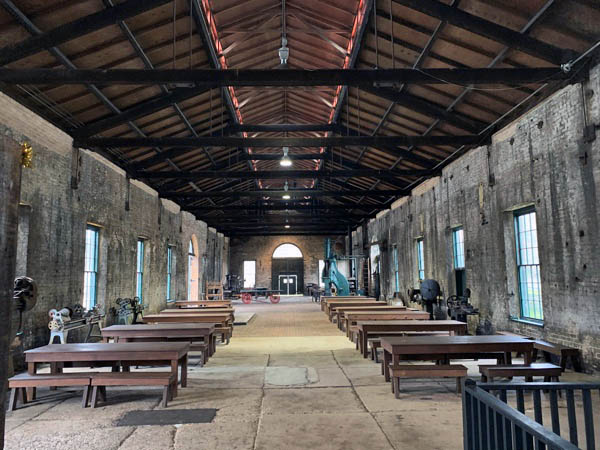
Dec 2019 / RWH

 his building, completed by 1855, housed thirteen forges and a steam hammer used to fabricate metal components needed by the railroad to repair, rebuild or build locomotives and other pieces of rolling stock. Smoke from each forge was funneled out of the building through underground smoke tunnels feeding into the main Smokestack. Currently, it houses blacksmiths' tools, forges and a steam hammer, as well as a belt driven machinery exhibit.
his building, completed by 1855, housed thirteen forges and a steam hammer used to fabricate metal components needed by the railroad to repair, rebuild or build locomotives and other pieces of rolling stock. Smoke from each forge was funneled out of the building through underground smoke tunnels feeding into the main Smokestack. Currently, it houses blacksmiths' tools, forges and a steam hammer, as well as a belt driven machinery exhibit.
Georgia State Railroad Museum
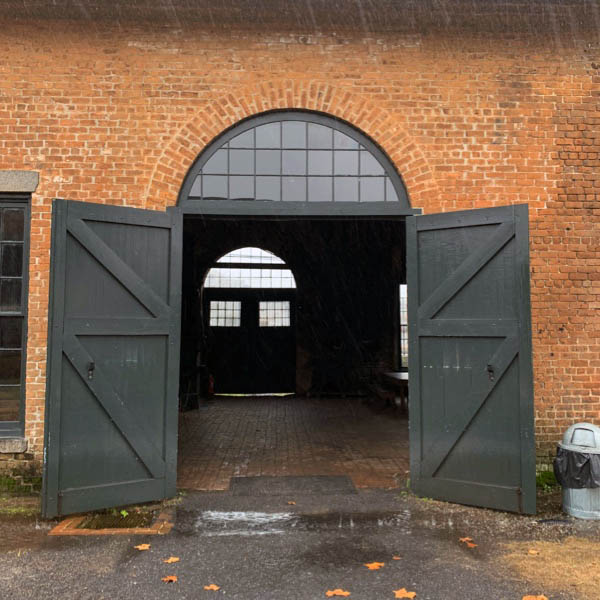
Dec 2019 / RWH
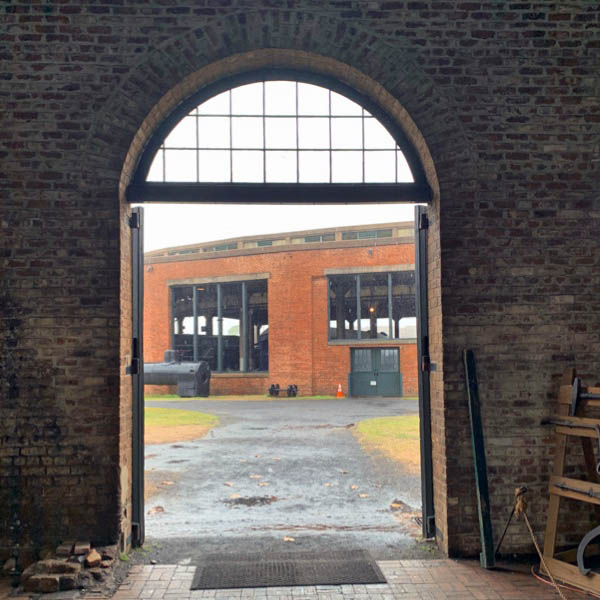
Dec 2019 / RWH

Dec 2019 / RWH

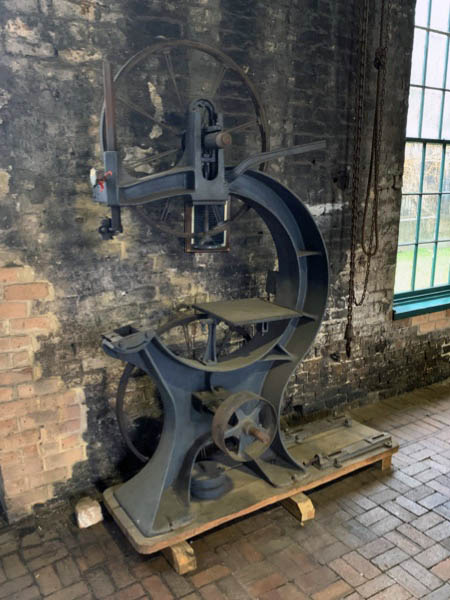


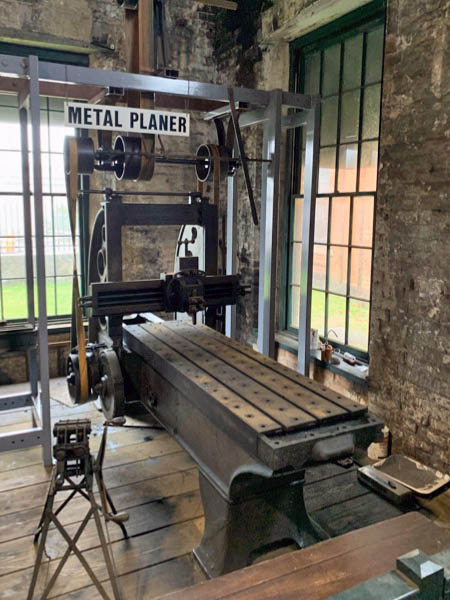
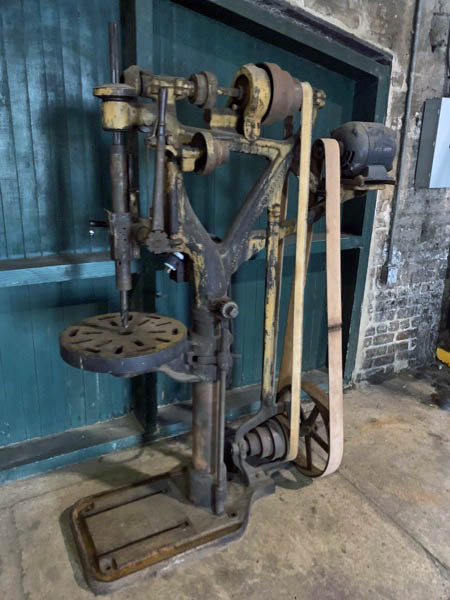
Dec 2019 / RWH
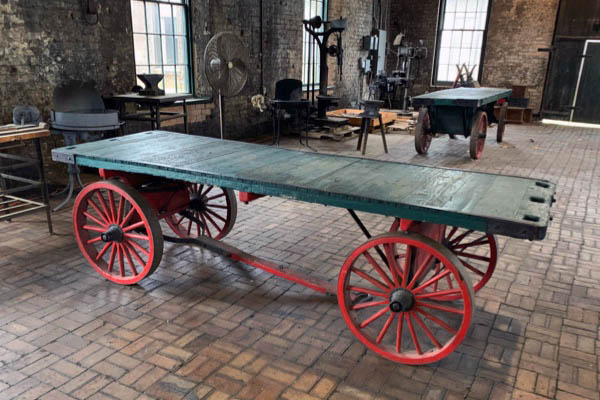
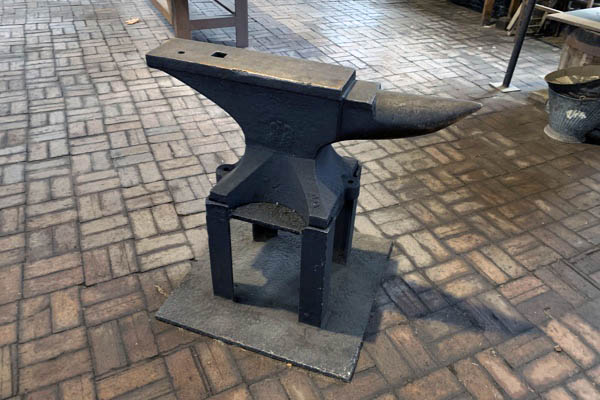
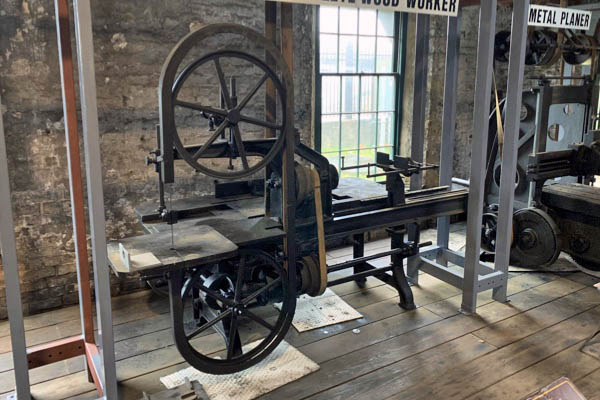
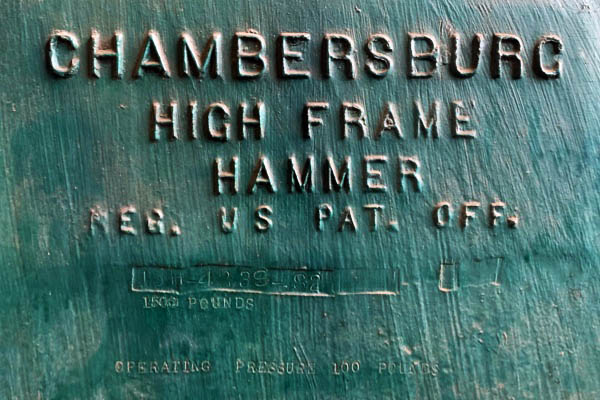
Dec 2019 / RWH
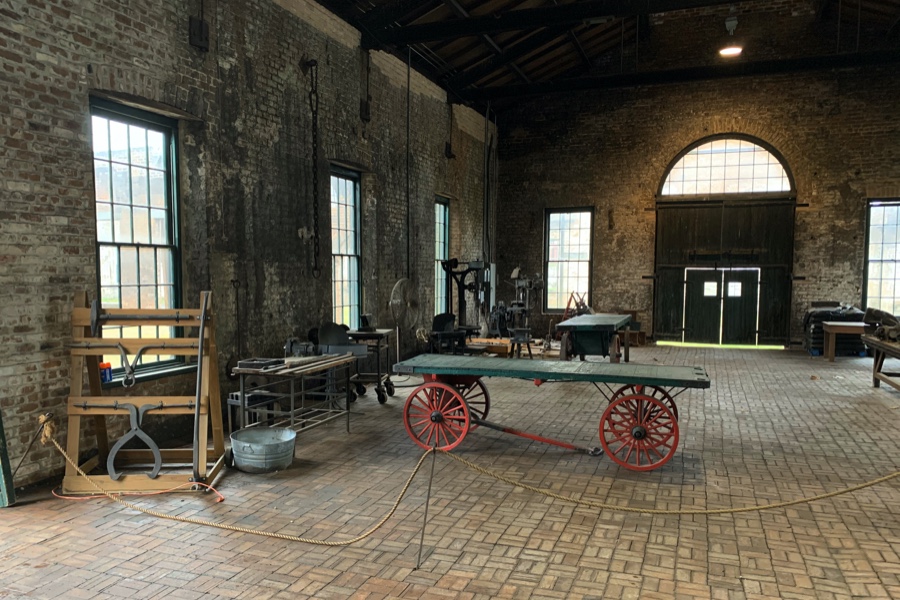
Dec 2019 / RWH
Tender Frame Shop
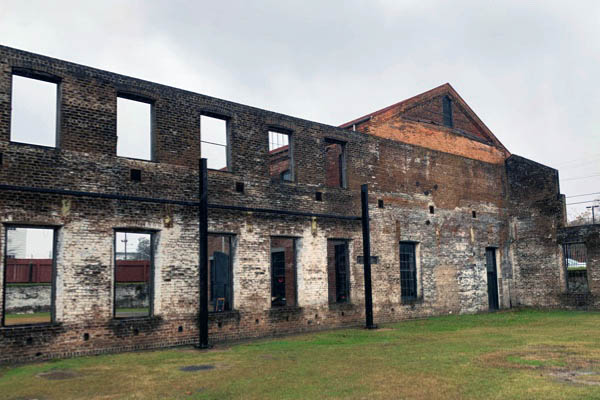
Savannah, Ga / Dec 2019 / RWH
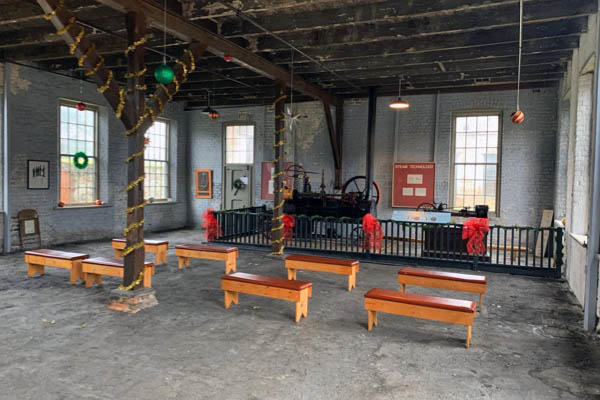
Dec 2019 / RWH

 ompleted by 1855, the Tender Frame Shop building was originally designed to house the Master Mechanic's office and a shop for the construction of locomotive tender frames. Later, it housed an air brake shop. In 1899, a second floor was added for blueprinting, drafting and a testing laboratory. Currently, this building houses a Smith & Porter portable steam engine built in 1858, a track laying exhibit and a family-friendly space called, Locomotion Lab.
ompleted by 1855, the Tender Frame Shop building was originally designed to house the Master Mechanic's office and a shop for the construction of locomotive tender frames. Later, it housed an air brake shop. In 1899, a second floor was added for blueprinting, drafting and a testing laboratory. Currently, this building houses a Smith & Porter portable steam engine built in 1858, a track laying exhibit and a family-friendly space called, Locomotion Lab.
Georgia State Railroad Museum
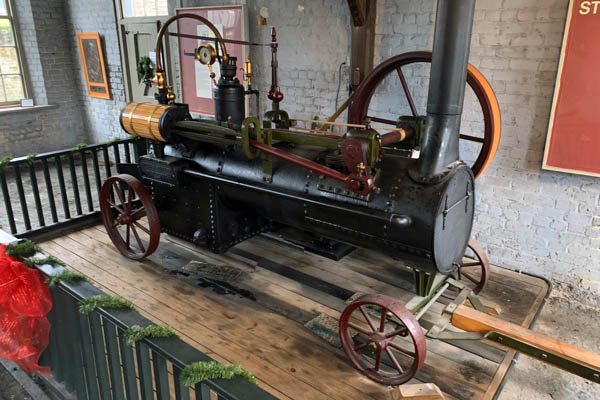
Dec 2019 / RWH
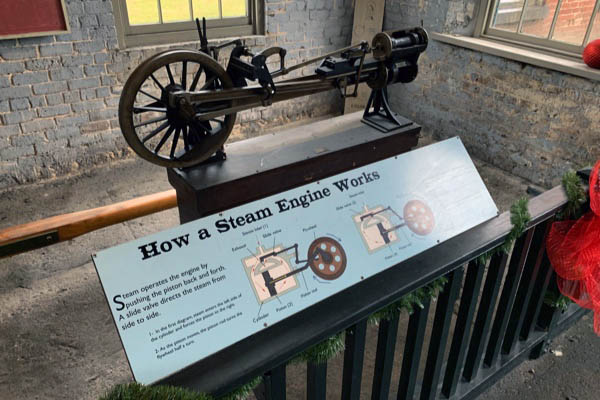
Dec 2019 / RWH
 Turntable
Turntable
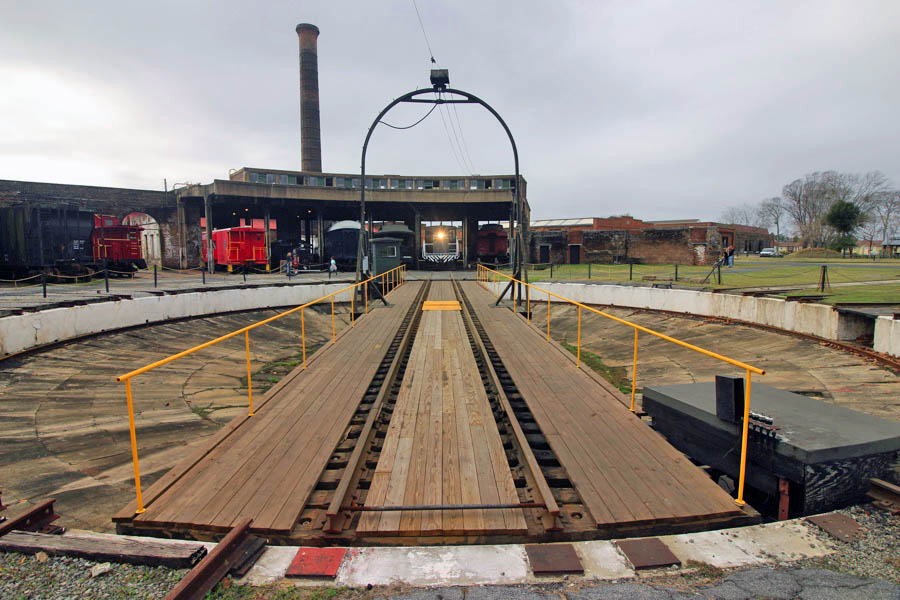
Savannah, Ga / Dec 2019 / RWH

 ocated at the center of the Roundhouse, the turntable allowed locomotives brought into the shop access to all of the stalls. The original turntable was 50 feet long and turned by hand. The current turntable was installed in the Columbus shops in 1907 and was 75 feet long. In 1923, it was moved to and installed in Savannah. It was extended 5 feet on either side in 1945 to its current length of 85 feet. Today it is operated with an electric motor.
ocated at the center of the Roundhouse, the turntable allowed locomotives brought into the shop access to all of the stalls. The original turntable was 50 feet long and turned by hand. The current turntable was installed in the Columbus shops in 1907 and was 75 feet long. In 1923, it was moved to and installed in Savannah. It was extended 5 feet on either side in 1945 to its current length of 85 feet. Today it is operated with an electric motor.
Georgia State Railroad Museum
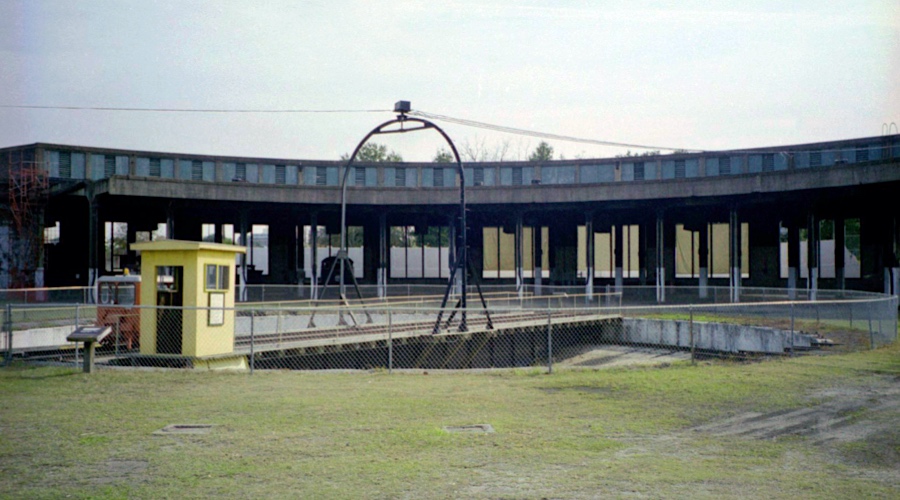
Savannah, Ga / Nov 1996 / RWH
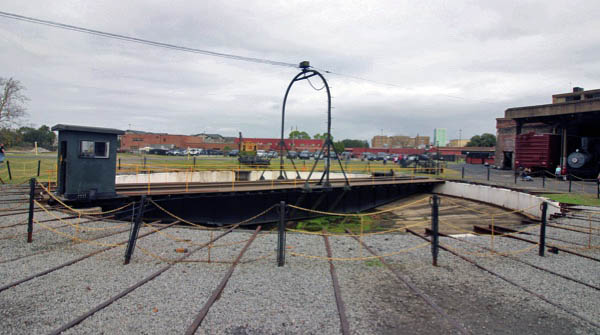
Savannah, Ga / Dec 2019 / RWH
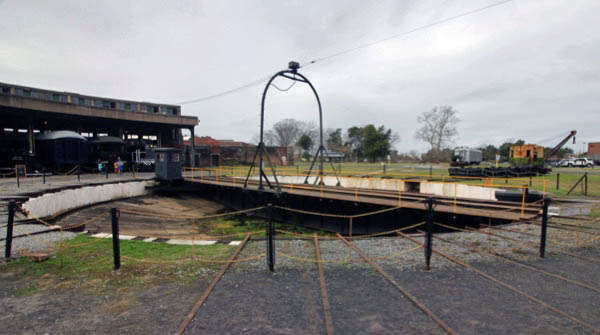
Savannah, Ga / Dec 2019 / RWH

Savannah, Ga / Dec 2019 / RWH

Savannah, Ga / Dec 2019 / RWH
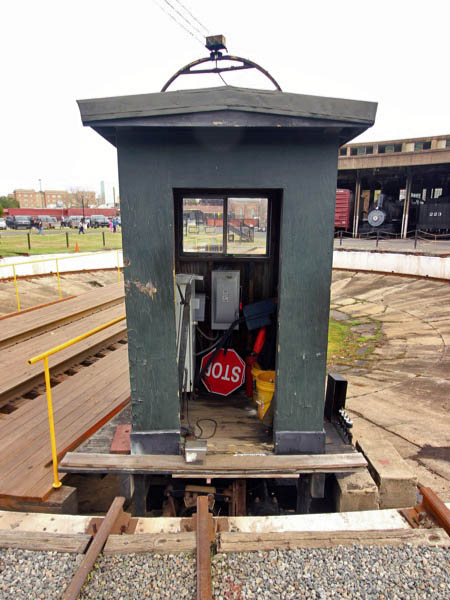
Dec 2019 / RWH
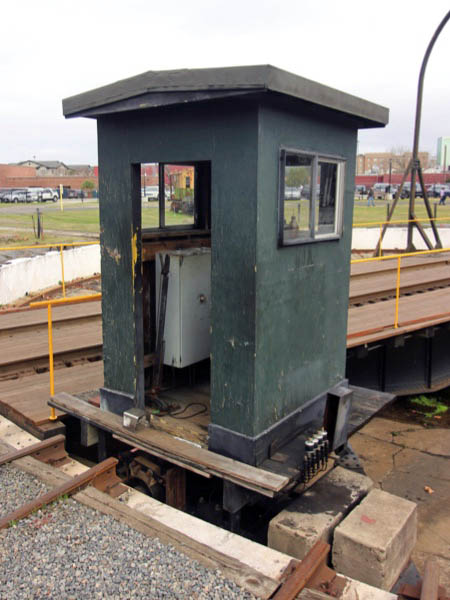
Dec 2019 / RWH
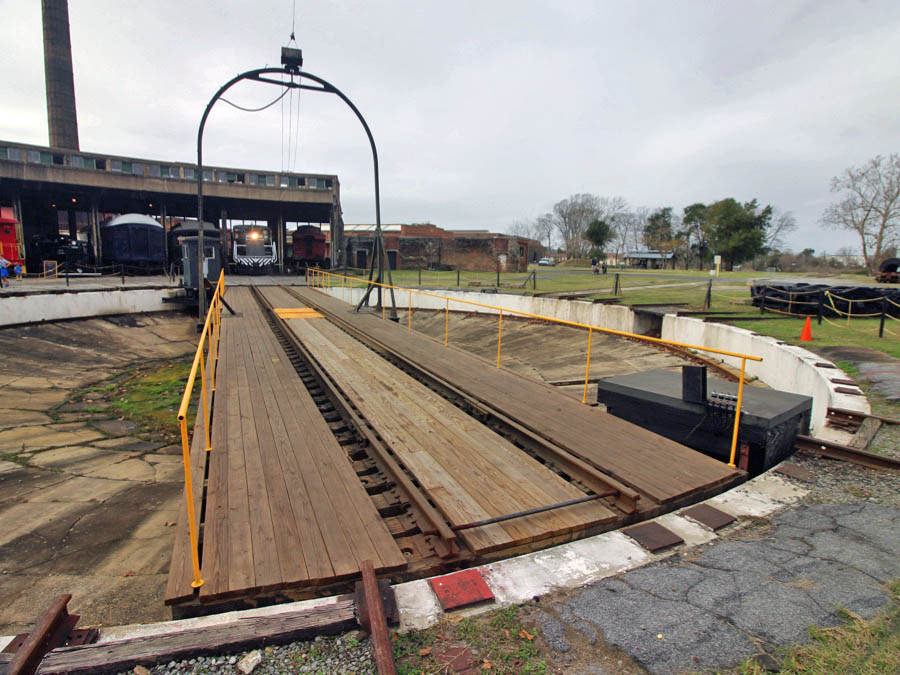
Savannah, Ga / Dec 2019 / RWH
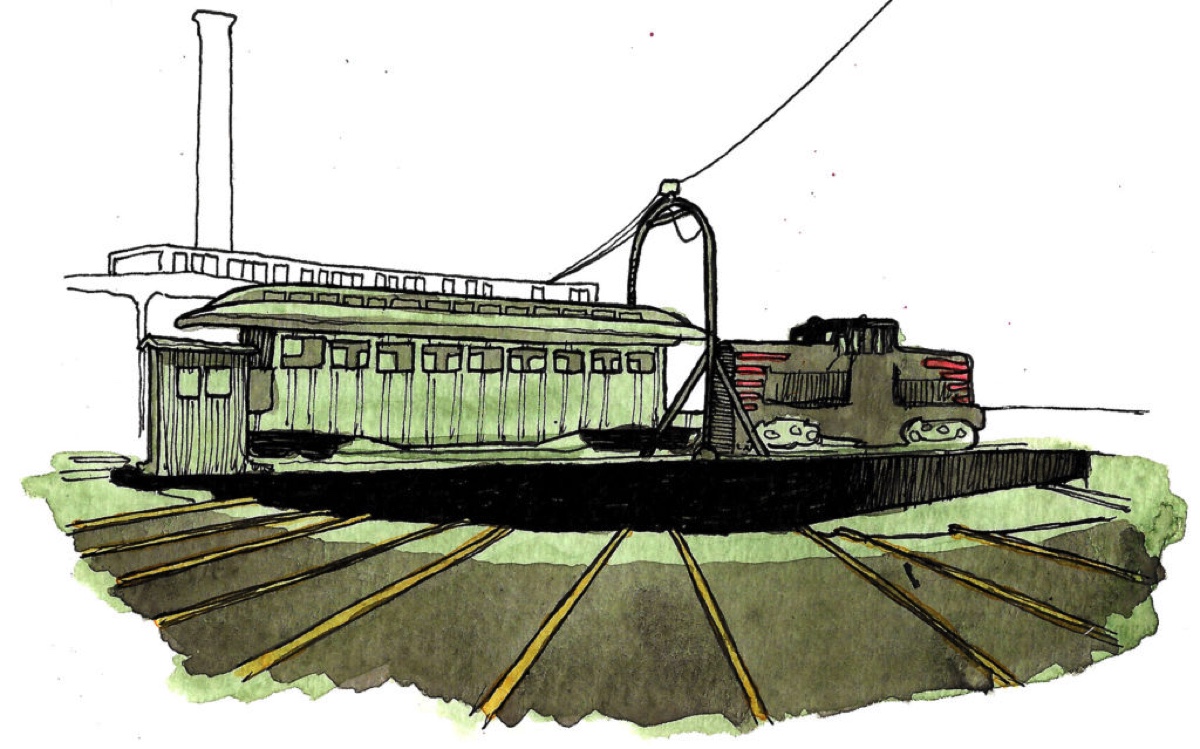
James McInvale / The Inky Atlas
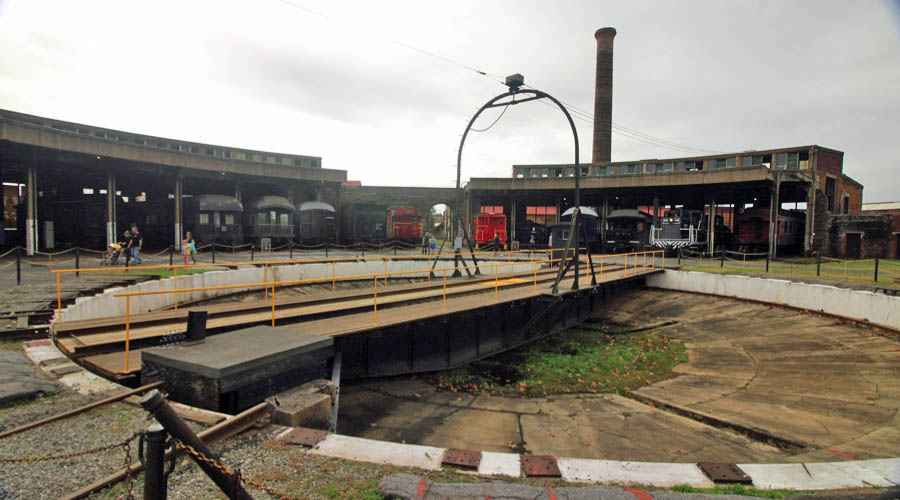
Savannah, Ga / Dec 2019 / RWH
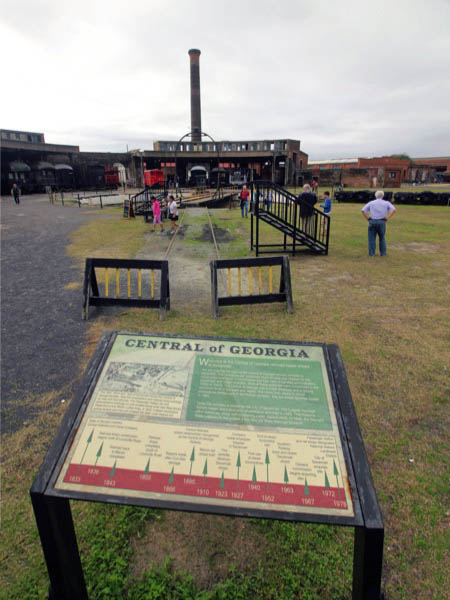
Dec 2019 / RWH
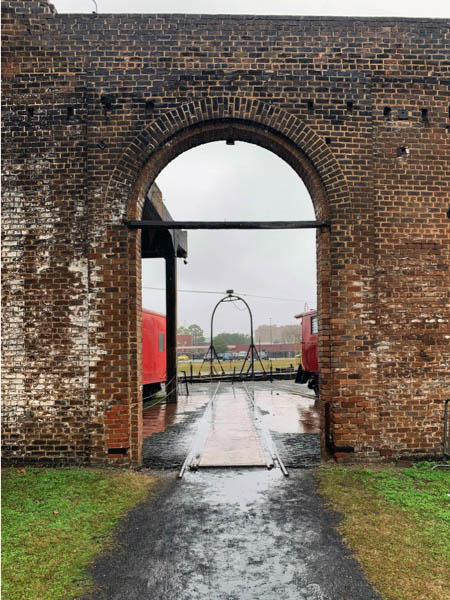
Dec 2019 / RWH

Savannah, Ga / Oct 2024 / RWH

Savannah, Ga / Oct 2024 / RWH


